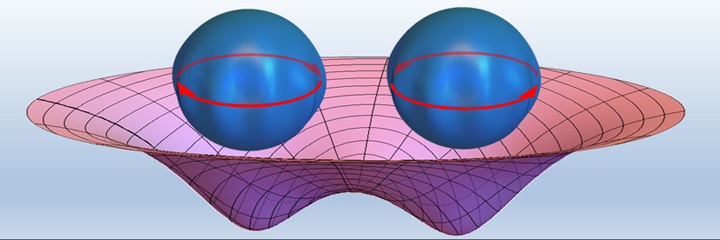March 22, 2015 – Our drive north from Florida has ended and now it’s time to get back to the last throes of winter here in Toronto. Today as I walked my dog, Maya, we heard the sound of Redwing Blackbirds in the local park. The males were staking out territory at treetop level. So this may mean a real spring is not far from breaking out here in the Great White North. It will be most welcome. But back to the business of unlocking the mysteries of science and technology here in the 21st century.
The theory of quantum gravity was first postulated by Albert Einstein who proposed back in the 1920s a number of experiments to prove its existence. You see quantum mechanics and gravity seem at cross purposes. The objects quantum physicists study act oddly. They can be particles or act like waves. Think about how light is described as photons (a particle) and also as waves. And also when quantum objects act they can often be in multiple places at once. One cannot say that about you or me. We don’t act like quantum objects at all.
A team at Yale University is creating a device to test gravity at the quantum level. They are doing this with an object that would be considered gigantic on a quantum scale – a drop of superfluid helium a millimeter across. This would be the first time that quantum effects could be observed with the naked eye. The droplet will be suspended in a magnetic field while a photon is fired at it. The superfluid will capture the photon which will bounce around inside it. The quantum effects of the photon will then be studied by observing the motion in the drop.
Practical application of this research could lead to new advances in quantum computing, telecommunications and cryptography. But don’t hold your breath to see results soon. The experiment is expected to last five years before definitive study results get reported in physics’ journals.
The above illustration is an artist’s rendition of what a levitated drop of superfluid helium would look like with a single photon (the red arrows) circulating within it. Note the droplet when impacted by the photon produces a superposition, being in two places at the same time. The gravitational field is represented schematically beneath the superfluid drop and may limit the superposition effect.









